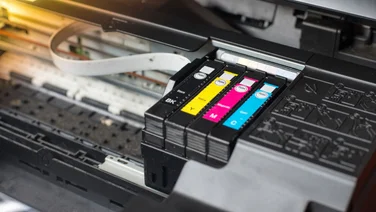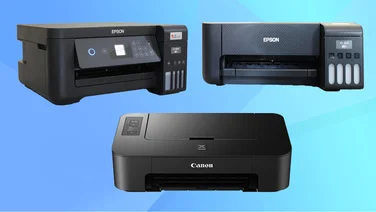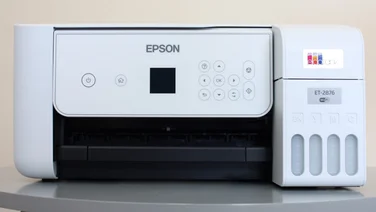To help us provide you with free impartial advice, we may earn a commission if you buy through links on our site. Learn more



The BX925FWD is the top model in Epson’s considerable range of business-orientated MFPs. Although it can’t handle A3 paper like the Brother MFP reviewed opposite, it has a similarly high specification that includes faxing, direct photo printing and support for wired and wireless networking.

This MFP’s paper handling is almost as impressive as the Brother’s. Again, there are two 250-sheet paper trays and both the ADF and printer have automatic duplexing, so prints, scans and copies can all be double-sided. While the Brother achieves duplex scans in a single pass by using a second contact image sensor (CIS) arranged within the ADF, Epson’s solution is to mechanically flip the paper over and re-feed it.
While many business-focused products look dull, the BX925FWD is quite striking. It’s made from attractive black plastics, and has a particularly attention-grabbing control system. Almost everything is accessed via a huge touch-sensitive panel, at the centre of which is an 8.9cm colour touchscreen. Such systems can be disastrously cumbersome and prone to lag, but Epson’s is very responsive, making this MFP easy to use. It’s a complex device, though, and as with the Brother you have to dig around for some of the advanced settings.

The BX925FWD generally feels as well-built as it looks. When we began testing the scanner, we were surprised to see a ‘scanner warming up’ message for a few seconds; something typical of older devices with fluorescent light sources but not of a modern CIS scanner that uses LEDs for illumination. Fortunately this didn’t reappear between jobs.
We’re used to seeing good quality scans from Epson products, and the BX925FWD proved no exception. While its scans weren’t the sharpest we’ve seen, colours were highly faithful to the originals and details were preserved in both dark and light regions. However, while Epson’s photo-orientated printers generally use dye-based inks for excellent photos, the BX925FWD uses pigment inks, which help it produce stronger, bolder prints on plain paper at the cost of photo quality, which was underwhelming here. The payoff is in excellent monochrome copies and reasonably punchy business graphics. Black text was far better than from Epson’s photo printers, too, but the outlines of characters still betrayed their inkjet origins – a laser printer is far better for formal text printing.

There are high-capacity cartridges available for the BX925FWD, and using them keeps running costs down, particularly in colour. The Canon i-Sensys LBP6300dn is cheaper when printing monochrome pages, though. While this is a competent and attractive micro business MFP, the Kodak ESP 9250 costs £40 less and is even cheaper to run.






